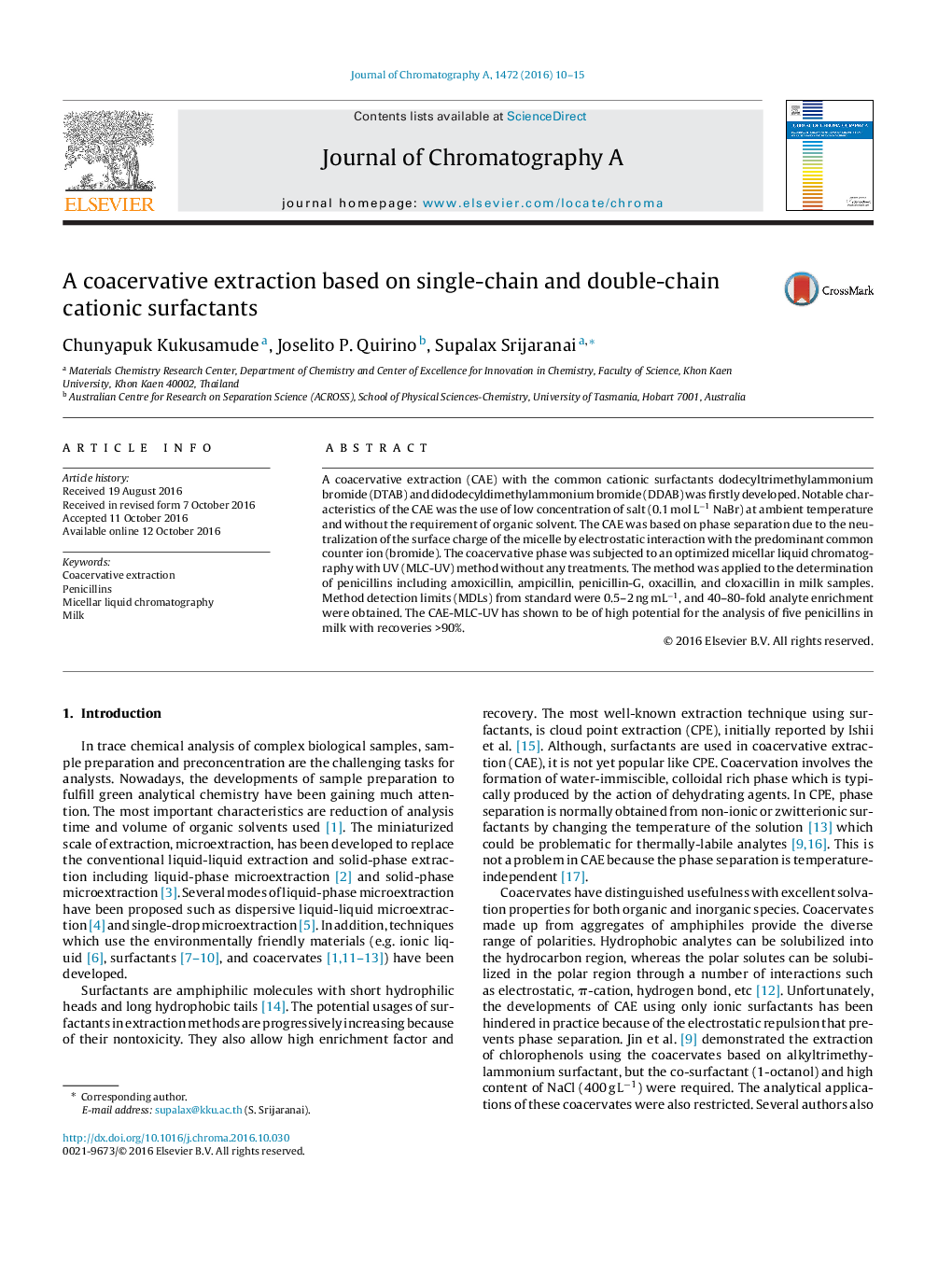| Article ID | Journal | Published Year | Pages | File Type |
|---|---|---|---|---|
| 5135485 | Journal of Chromatography A | 2016 | 6 Pages |
â¢Novel CAE by the sole manipulation of cationic surfactants is presented.â¢Solvent-free CAE at ambient temperature was developed.â¢The coacervative phase can be injected directly into MLC-UV system.â¢The CAE fulfills the demand of green and sustainable analytical chemistry.â¢Analysis of five penicillins in complex milk samples was achieved.
A coacervative extraction (CAE) with the common cationic surfactants dodecyltrimethylammonium bromide (DTAB) and didodecyldimethylammonium bromide (DDAB) was firstly developed. Notable characteristics of the CAE was the use of low concentration of salt (0.1 mol Lâ1 NaBr) at ambient temperature and without the requirement of organic solvent. The CAE was based on phase separation due to the neutralization of the surface charge of the micelle by electrostatic interaction with the predominant common counter ion (bromide). The coacervative phase was subjected to an optimized micellar liquid chromatography with UV (MLC-UV) method without any treatments. The method was applied to the determination of penicillins including amoxicillin, ampicillin, penicillin-G, oxacillin, and cloxacillin in milk samples. Method detection limits (MDLs) from standard were 0.5-2 ng mLâ1, and 40-80-fold analyte enrichment were obtained. The CAE-MLC-UV has shown to be of high potential for the analysis of five penicillins in milk with recoveries >90%.
